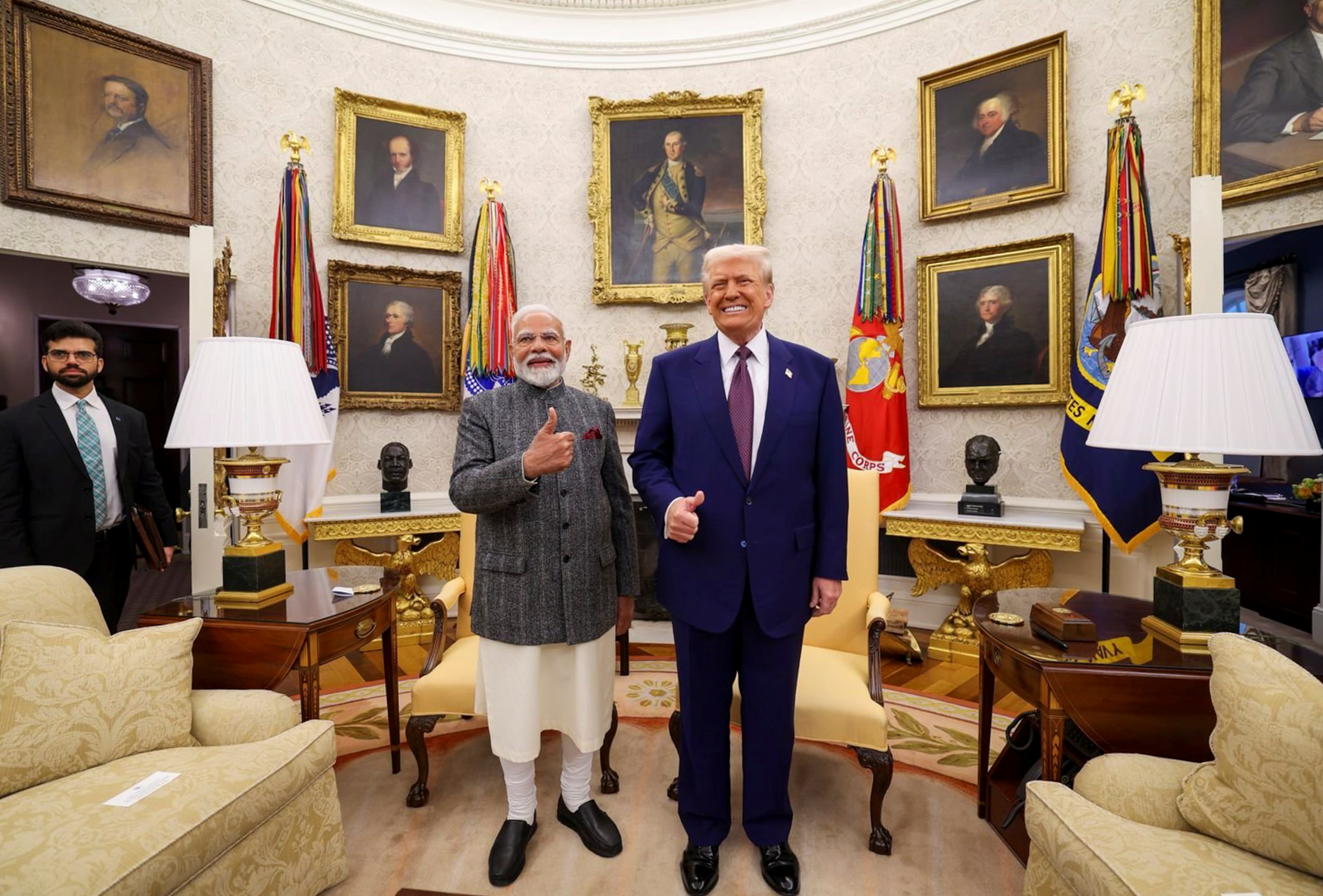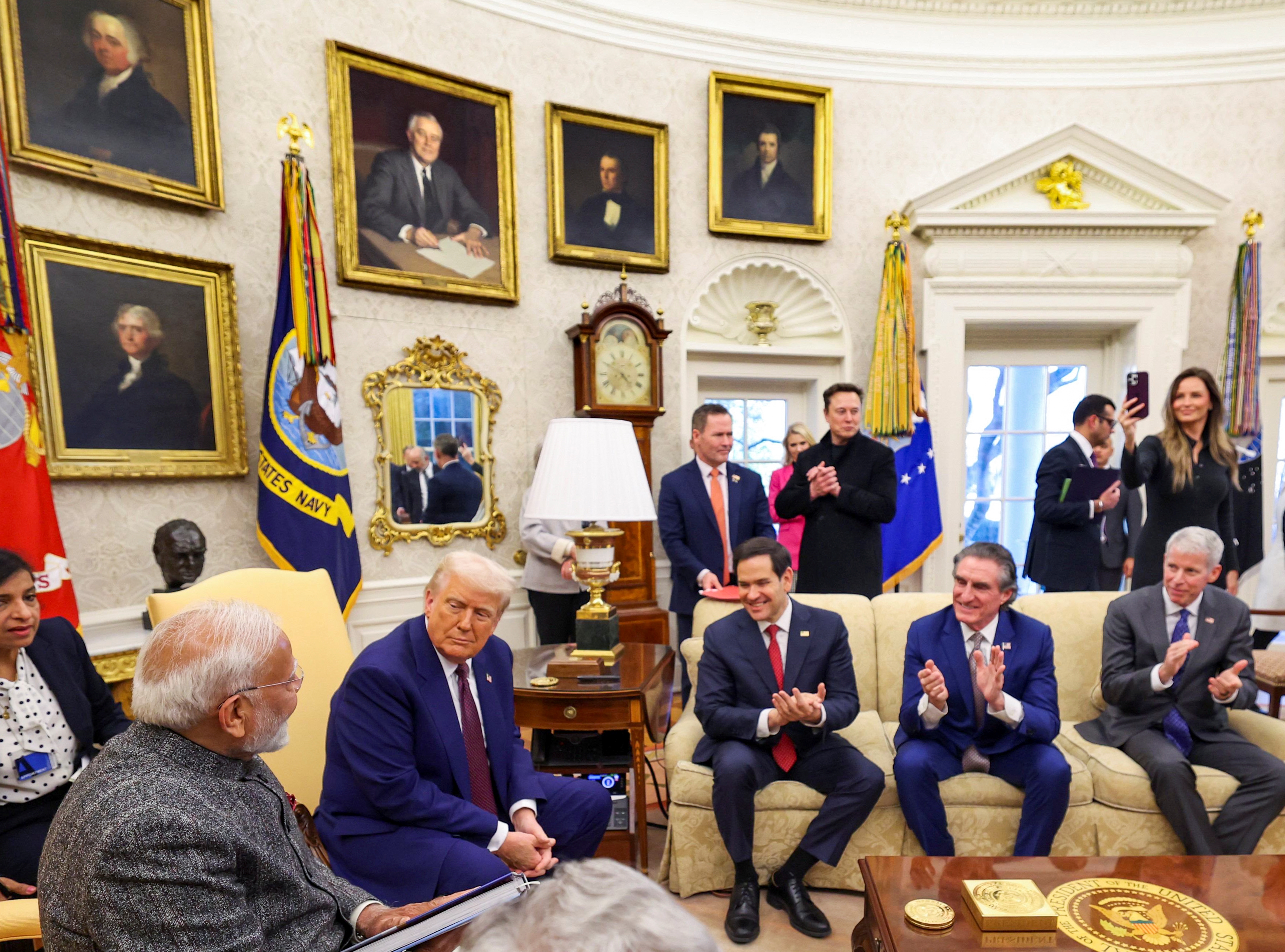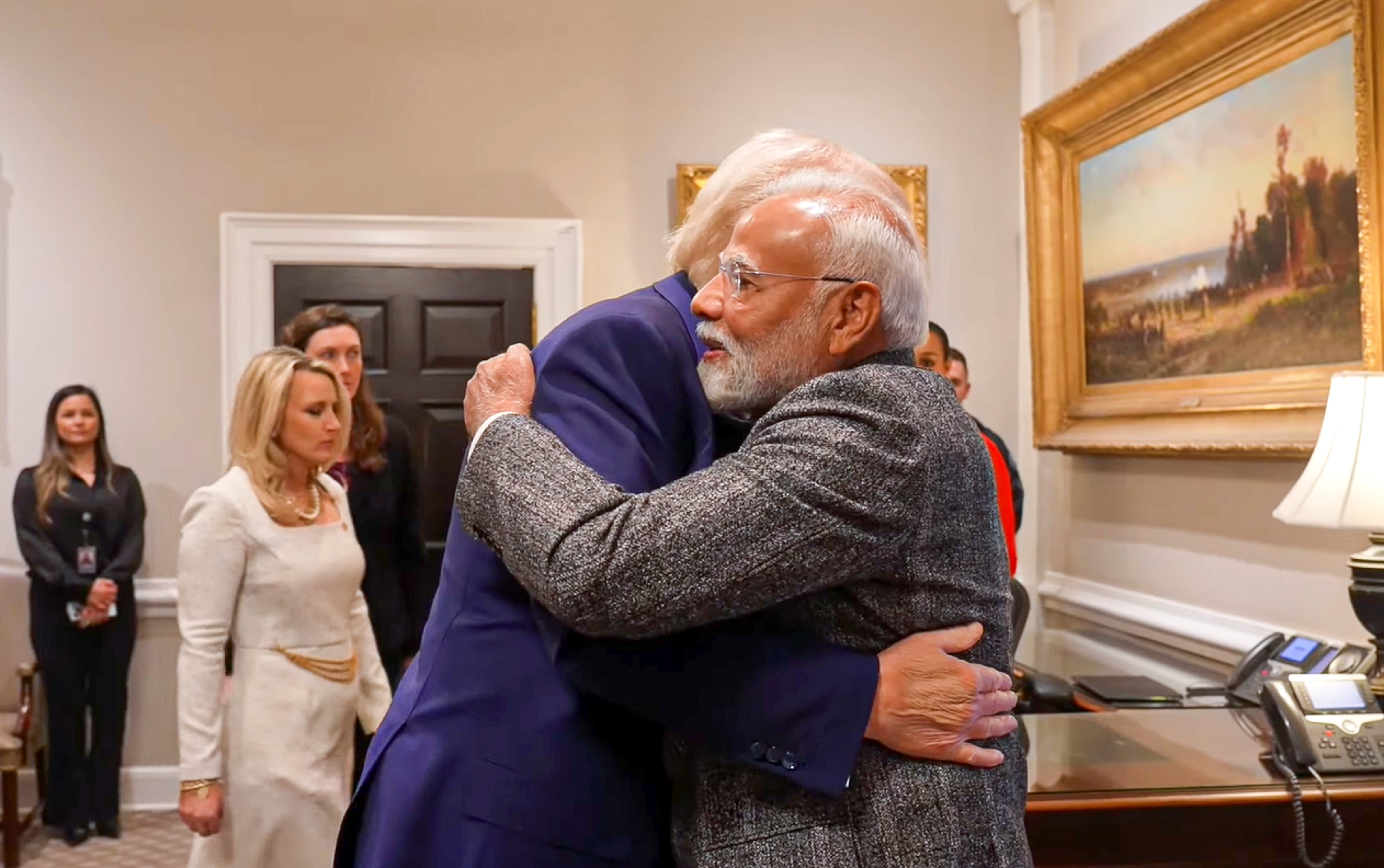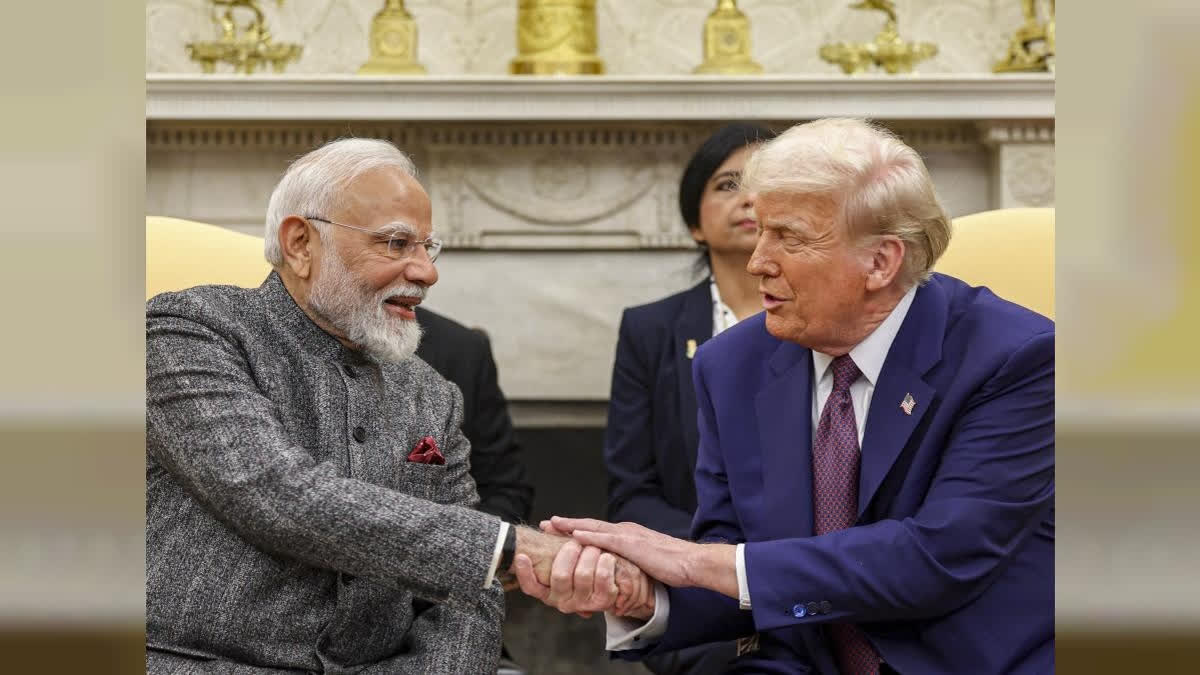A host of issues took centre stage as Prime Minister Narendra Modi met Donald Trump in the United States. One way to assess the significance of this visit is by considering the order of state leaders, who have travelled to Washington, D.C., to meet Trump. Prime Minister Modi is only the fourth head of state to do so, with three key issues driving the agenda.
First, the India-U.S. bilateral relationship has expanded significantly, encompassing a broad range of issues—including immigration, trade, defence, and regional security in the Indo-Pacific. Second, Trump’s domestic priorities in his second term are certain to impact external relations, especially with key partners like India, where people-to-people ties have deepened.

His focus on immigration has further highlighted the issue's urgency in the U.S., which, while not directly linked to India, has far-reaching implications. The number of Indian-origin illegal immigrants in the U.S. is estimated to have surpassed 800,000. Additionally, the Trump administration's handling of deportations may pose diplomatic and public relations challenges for partner countries, sending mixed signals back home. Third, the global implications of stronger India-U.S. ties are underscored by shifting geopolitical dynamics, regional security in the Indo-Pacific, and the balance of power in Asia. In an increasingly fractured world order, the U.S. needs India as much as India needs the U.S. Together, these factors have reinforced the strategic importance of India-U.S. relations today.
Broadly, continuity in India-U.S. relations is expected, given the depth and breadth of issues the two countries engage with today. While the Trump administration has picked up from where the Joe Biden administration left off, every presidency leaves its own imprint on U.S. policy, particularly in dealings with key bilateral partners.

So far, Trump 2.0 has viewed India favourably, notably by avoiding any deliberate targeting in trade policies. Unlike America's neighbours, Mexico and Canada, or its chief rival, China, India has not been included in Trump’s list of countries facing new tariffs. In recent executive orders imposing a blanket 25% tariff on steel imports from Mexico, Canada, Argentina, and Japan, India was conspicuously absent. India’s unique position as a non-ally of the U.S. may have provided it with a buffer, keeping it out of Trump's direct trade crosshairs.
A key geopolitical factor shaping India’s standing with the U.S. is its strategic positioning vis-à-vis China in the Indo-Pacific. The urgency with which Trump has sought to address the wars in Gaza and Ukraine is underpinned by a larger China question. China remains the foremost challenge to U.S. global supremacy, and Trump’s ability to "restore American greatness" will largely depend on how he manages this competition. The broader U.S.-China geostrategic and technological rivalry is set to define the next decade, shaping the strategic calculus of other global players—India among them.
With Russia and China increasingly aligned amid growing global fractures, the Trump administration has inherited a more divided world order than most recent U.S. presidencies. Coupled with its domestic focus, it is unsurprising that the administration has prioritised winding down international conflicts and pledged not to start new ones. Trump’s “peace through strength” doctrine reflects this approach, aligning with India’s long-standing preference for diplomacy.

Early indications suggest that Trump's efforts to end conflicts may be taking shape. Two key signs point in this direction: the temporary ceasefire between Israel and Hamas in the Middle East and his recent conversations with both Vladimir Putin and Volodymyr Zelensky, signalling his intent to broker peace—even if it comes at the expense of one party.
India stands to benefit significantly from a more stable world order. In the Middle East, where India has deep ties through its diaspora, goodwill, and trade, lasting peace could finally allow the India-Middle East-Europe Economic Corridor (IMEC) to take off, challenging China’s Belt and Road Initiative by establishing new supply chain routes. A resolution to the Russia-Ukraine war would ease international sanctions on Russia, reducing pressure on India’s strategic ties with Moscow.
Perhaps the most challenging aspect of India’s dealings with Trump will be the bilateral economic dimension. Avoiding tariffs and addressing the U.S. trade deficit with India could prove difficult, as these may be among Trump’s key demands. If India succeeds in meeting some of these expectations, it should also assertively push its own priorities—particularly on immigration.
(Disclaimer: The opinions expressed in this article are those of the writer. The facts and opinions expressed here do not reflect the views of ETV Bharat)



